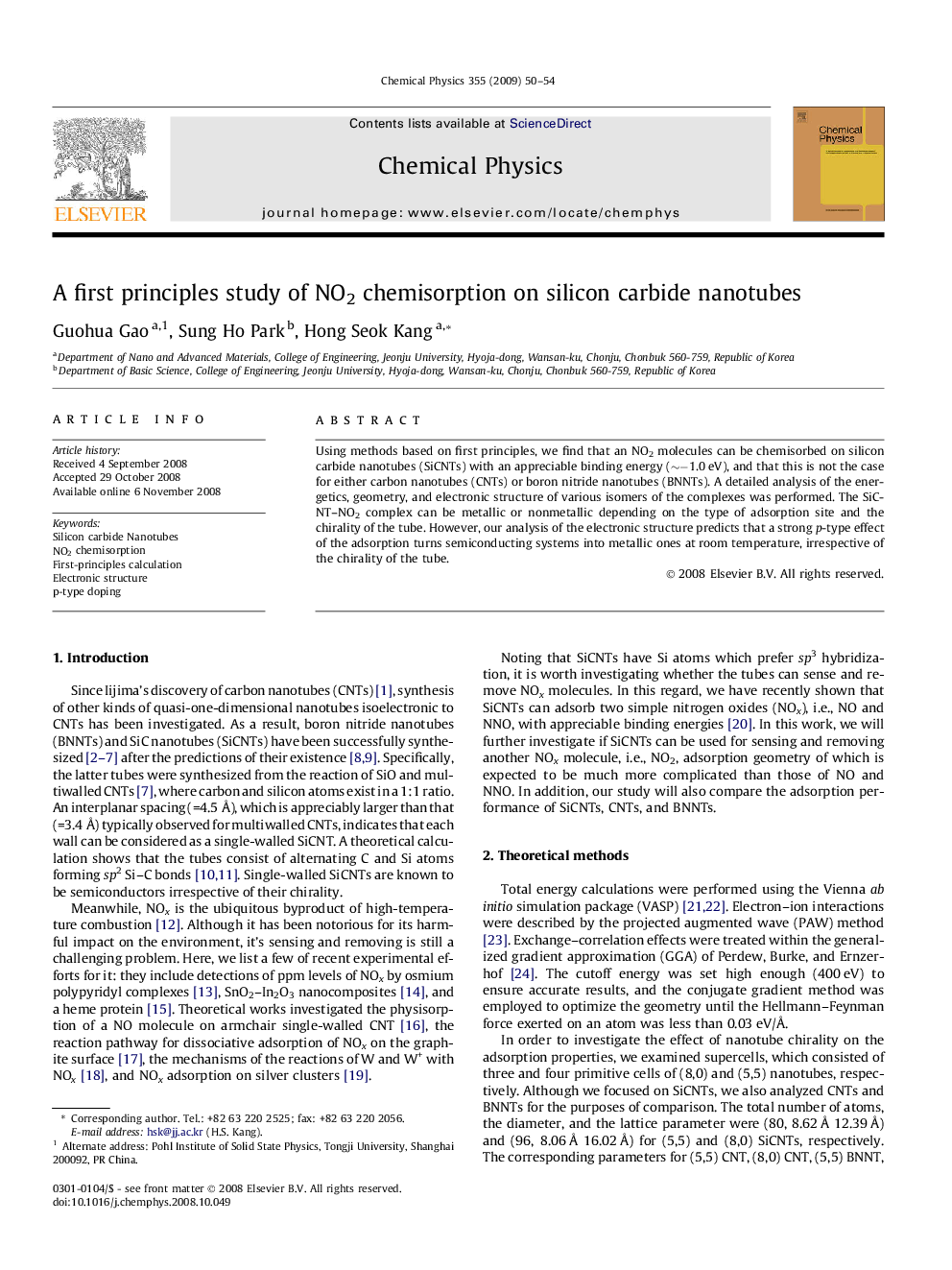| Article ID | Journal | Published Year | Pages | File Type |
|---|---|---|---|---|
| 5375817 | Chemical Physics | 2009 | 5 Pages |
Abstract
Using methods based on first principles, we find that an NO2 molecules can be chemisorbed on silicon carbide nanotubes (SiCNTs) with an appreciable binding energy (â¼â1.0 eV), and that this is not the case for either carbon nanotubes (CNTs) or boron nitride nanotubes (BNNTs). A detailed analysis of the energetics, geometry, and electronic structure of various isomers of the complexes was performed. The SiCNT-NO2 complex can be metallic or nonmetallic depending on the type of adsorption site and the chirality of the tube. However, our analysis of the electronic structure predicts that a strong p-type effect of the adsorption turns semiconducting systems into metallic ones at room temperature, irrespective of the chirality of the tube.
Related Topics
Physical Sciences and Engineering
Chemistry
Physical and Theoretical Chemistry
Authors
Guohua Gao, Sung Ho Park, Hong Seok Kang,
